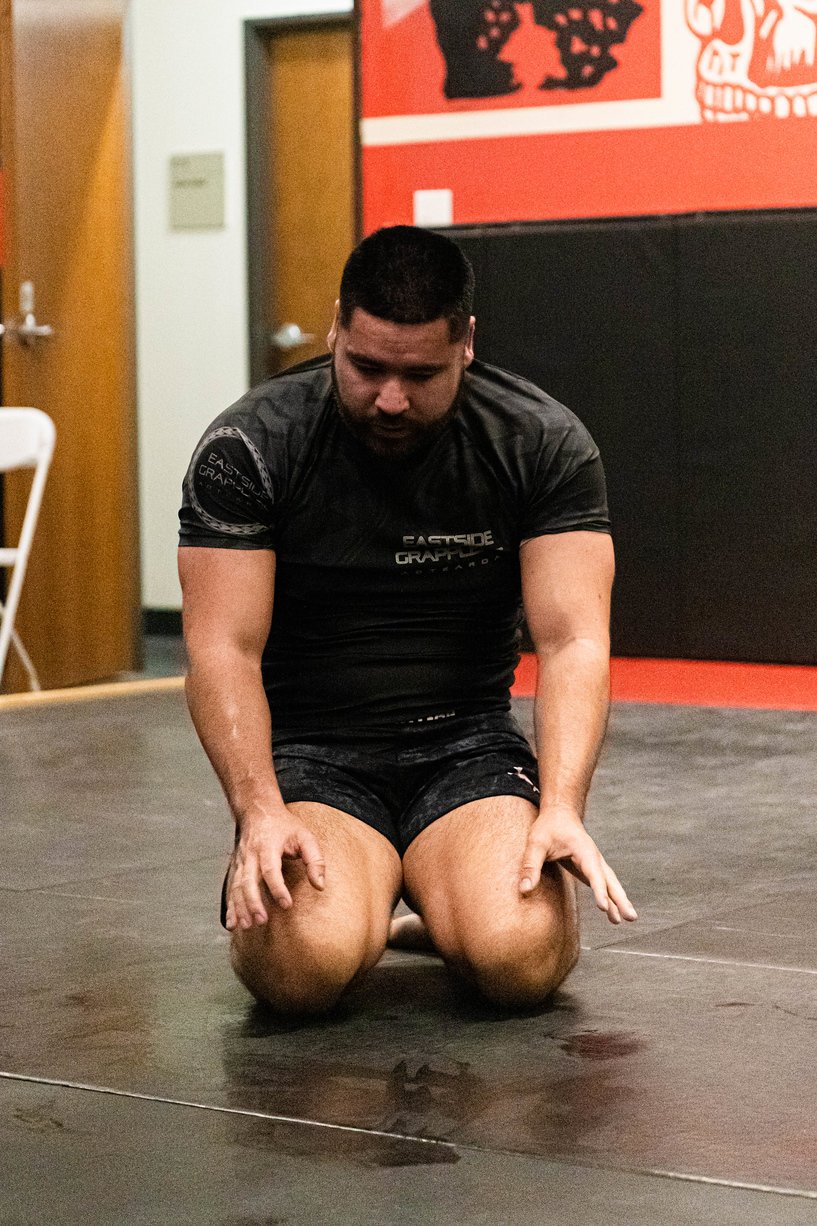Screw going for a long run. Why not blast yourself with 10 minutes of sprints to gas yourself up?
HIIT is excellent for BJJ as you can manipulate variables to target different physiological adaptations or work to rest ratios to enhance conditioning for BJJ competition.
While HIIT might be great, a pure HIIT approach to your conditioning could be detrimental to your BJJ performance. It’s not all sunshine and rainbows.
What Is HIIT?
High-intensity interval training (HIIT) is defined as repeated short and long moderate to high-intensity bouts of exercise with recovery periods between [1,2]. Sub-maximal intervals can be short (<45 seconds) or long (>2 minutes), including times in between [3].
Maximal sprint intervals can also be short (<10 seconds) or long (20-30 seconds). Varying the intensity, duration, and rest periods during HIIT will target particular physiological adaptations, making manipulating these variables essential.
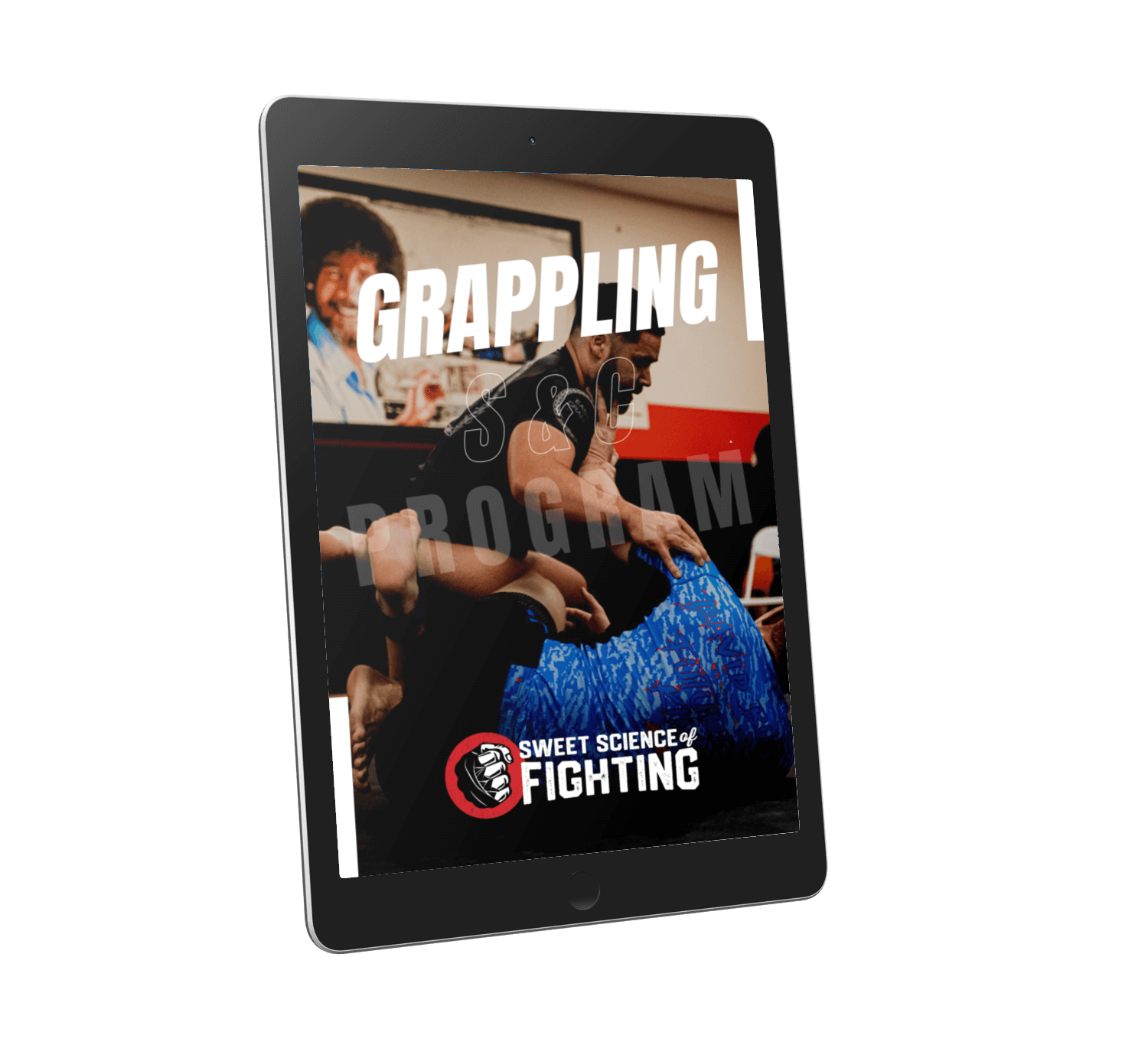
FREE Strength & Conditioning Program To Never Gas Out On The Mats
At an overview, longer intervals generally target aerobic adaptations while short, more intense intervals generally target anaerobic adaptations. While you can’t isolate energy systems, you can preferentially target energy systems by changing these variables.
Many hear HIIT and think about grueling sprints. But you’re not stuck with running. They can be done using any exercise modalities, such as traditional cardio machines. But my favorite method for BJJ is using shadow wrestling and BJJ solo drills.
These would be specific modalities where you should spend most of your BJJ conditioning time. You’d be surprised how intense you can make shadow wrestling for your HIIT sessions.
HIIT For BJJ
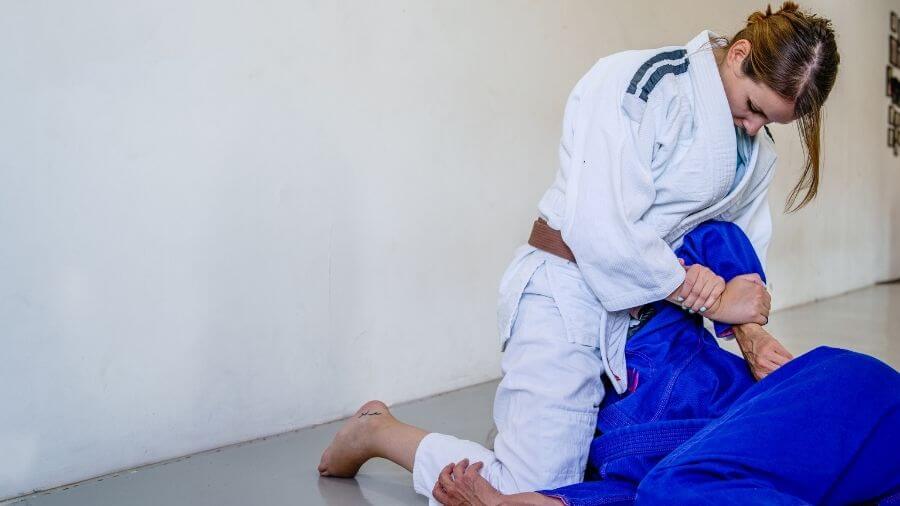
There are so many ways to program HIIT for BJJ. I’ll break this down as simple as possible so you can use these examples in your training.
Long Intervals
Long intervals are used to target the aerobic energy system. The longer the interval, the lower the intensity and, therefore, the more significant contributions from the aerobic energy system.
Specifically, we are looking at increasing stroke volume (the amount of blood pumped per heartbeat) and the number of mitochondria within the working muscles.
These intervals should be longer than 60 minutes with a work to rest ratio of 1-3:1. So, if you have a work interval of 60 seconds, the rest should range between 20-60 seconds, depending on your goals.
Regarding intensity, it is usually derived from the velocity at VO2max. However, as combat athletes, this is impossible.
So, we must use imperfect measurements like heart rate. 80-95% of HR max is recommended. Still, heart rate can go as low as 70% when focusing on cardiac output while reducing fatigue [4].
One way to estimate your maximum heart rate is using the formula 220 – your age. This is not accurate, so it may be worth doing a 5–6-minute maximal running test (or equivalent using an off-feet cardio machine) to get another maximum heart rate reference.
The length of intervals can vary from multiple 1-2 minutes, or you can replicate fight times with 5–10-minute intervals. Here are some examples:
- 4 x 8 min w/ 2 min rest @80-90% HR max
- 5 x 5 min w/ 2 min rest @70-80% HR max
- 12 x 2 min w/ 45 sec rest @80-90% HR max
The general rule of thumb is to use traditional cardio modalities for intervals over 4 minutes, so technique does not suffer. However, my experience with BJJ tends to ignore this rule, and it is well worth using specific BJJ modalities for long intervals.
It could be solo using shadow wrestling or with a partner drilling technique or trying to escape bad positions in positional sparring.
Short Intervals
Short intervals are used to target higher intensity aerobic and anaerobic adaptations. The benefit of shorter intervals is they aren’t long enough to allow the build-up of blood lactate. The build-up of lactate is associated with fatigue due to the acidity increase within the muscle.
But that doesn’t make short intervals devoid of fatigue-inducing exercise. The intensities are higher, resulting in residual fatigue. Regardless, short intervals are excellent for developing high-intensity conditioning. Here are some examples:
- 3 x (3 x 30 sec/120 sec) w/ 3min rest between series @100% HR max (maximal effort).
- 2 x (6 x 15/15 sec) w/ 2-3 min rest between series @85-100% HR max (near maximal effort)
These can be done by shooting takedowns or using sweeps.
Is HIIT Good For BJJ?
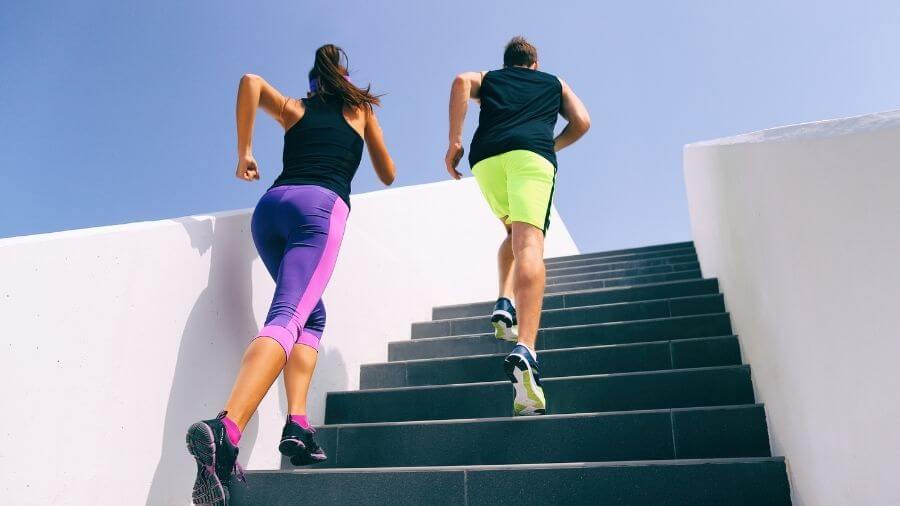
HIIT is great for BJJ as you can manipulate the variables to target different physiological adaptations or replicate harder fights. Some fights may involve rest in various positions, but some will push the pace. If you’re not prepared for many periods of fast, intense activity, you will struggle to recover between efforts.
Secondly, HIIT can be done purely using BJJ-specific training modalities. This is important as energy system adaptations aren’t solely about the heart and lungs. The working muscles must be able to use the oxygen being delivered to them.
If mainly using traditional forms of cardio, energy system adaptations occur within the muscles worked. So, when cycling, the adaptations occur in the legs. While you may get fitter on paper, you will struggle when stepping on the mats and using your upper body.
Additionally, there is a movement efficiency component to conditioning many people ignore. If you become more efficient at performing a movement, you spend less energy doing it. So, by drilling specific BJJ exercises (e.g., technical stand up, submissions, and escapes) within your HIIT, you become more efficient at these movements.
Is BJJ Considered HIIT?
BJJ itself is considered HIIT. The average work to rest ratio in BJJ would be viewed as a long interval at 6:1 [5]. It’s important to note that this is the average. Many times, you are required to be more or less active, so it’s essential to prepare across the spectrum.
A Problem With HIIT For BJJ
HIIT is an excellent approach to your BJJ conditioning. However, the one issue with taking a pure HIIT approach is the payoff between fitness and fatigue. HIIT is considered middle-intensity exercise, making it insufficient to stimulate maximal outputs and too intense to recover from quickly.
If you are training a lot of BJJ, working a stressful job, having a family life, and other daily stressors, fatigue can manifest quickly if you spend all of your conditioning time outside BJJ doing HIIT.
The reason HIIT is so popular other than being able to do conditioning in less than 30 minutes is due to research showing that highly trained endurance athletes only got fitter by performing HIIT and not increasing the volume of steady-state cardio [6]. However, it’s important to note that:
- Training interventions cited lasted six days to 6 weeks [7].
- Six weeks of running training significantly increased VO2max and running performance [8].
- Going from spending most of the time doing one thing will always lead to diminishing results, and a new stimulus will spur further gains.
- If an individual VO2max is below 60 ml.kg.min, low-intensity cardio is the simplest way to improve aerobic conditioning [6].
This is why my Underground Grappling Conditioning System has different conditioning workouts based on your fitness level. Regardless, intervals play a significant role as training progresses towards a competition.
Summary
HIIT for BJJ is a viable conditioning option and should be used throughout your BJJ preparation. The general approach would be to move from long to short intervals as you get closer to your competition.
Biggest, Baddest Gas Tank In Just 8 Weeks
The Underground Grappling Conditioning System specifically designed to develop elite level MMA cardio based on your easy to implement test results.
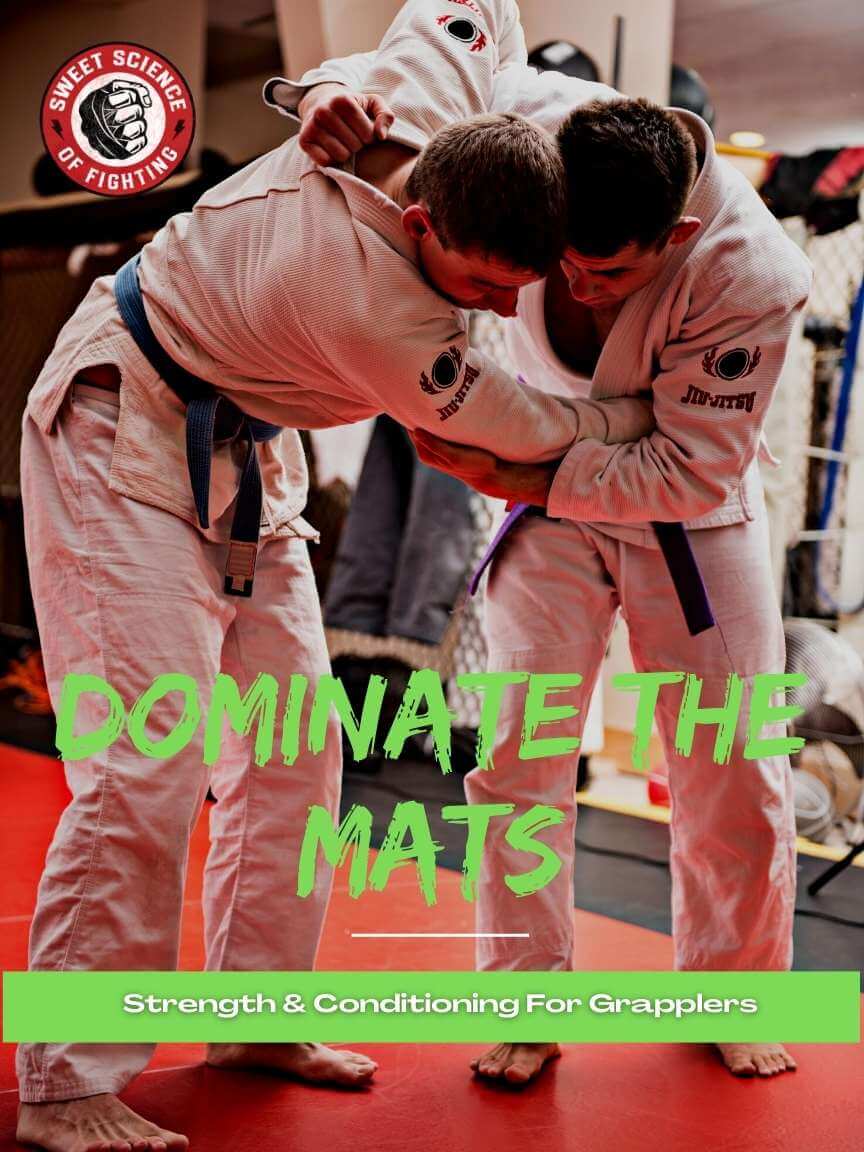

References
1. Buchheit, M., & Laursen, P. B. (2013). High-intensity interval training, solutions to the programming puzzle. Sports medicine, 43(5), 313-338.
2. Billat, L. V. (2001). Interval training for performance: a scientific and empirical practice. Sports medicine, 31(1), 13-31.
3. Buchheit, M., & Laursen, P. B. (2013). High-intensity interval training, solutions to the programming puzzle. Part 2. Sports medicine, 43(10), 927-954.
4. Laursen, P., & Buchheit, M. (2019). Science and application of high-intensity interval training. Human Kinetics.
5. Andreato, L. V., Franchini, E., De Moraes, S. M., Pastório, J. J., Da Silva, D. F., Esteves, J. V., & Branco, B. H. (2013). Physiological and technical-tactical analysis in Brazilian jiu-jitsu competition. Asian journal of sports medicine, 4(2), 137.
6. Laursen, P. B., & Jenkins, D. G. (2002). The scientific basis for high-intensity interval training. Sports medicine, 32(1), 53-73.
7. Costill, D. L., Flynn, M. G., Kirwan, J. P., Houmard, J. A., Mitchell, J. B., Thomas, R., & Park, S. H. (1988). Effects of repeated days of intensified training on muscle glycogen and swimming performance. Med Sci Sports Exerc, 20(3), 249-254.
8. Lake, M. J., & Cavanagh, P. R. (1996). Six weeks of training does not change running mechanics or improve running economy. Medicine and science in sports and exercise, 28(7), 860-869.


